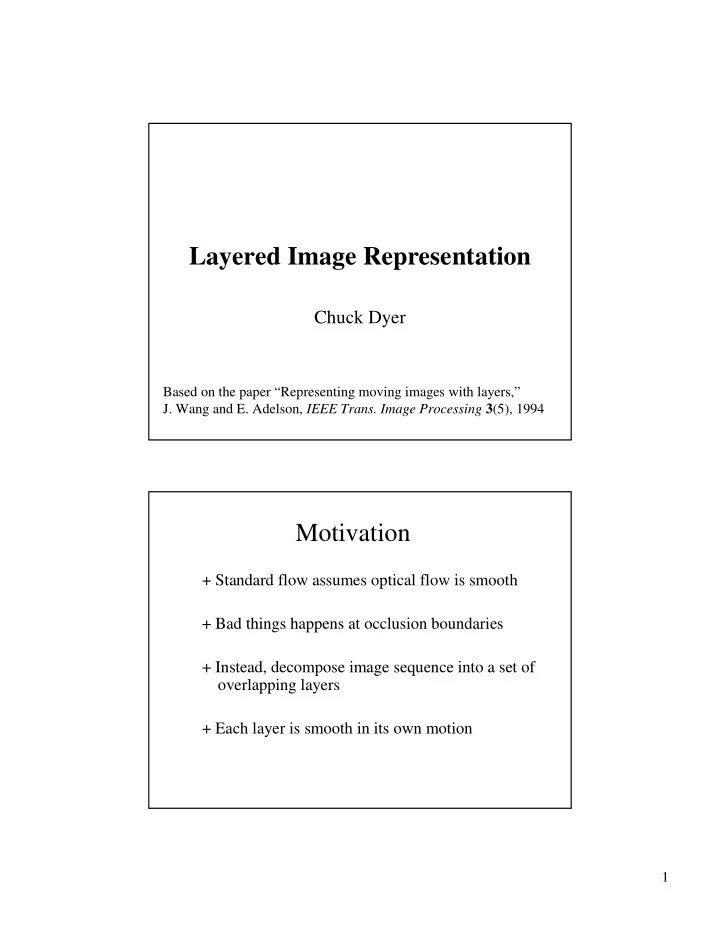

Layered Image Representation Chuck Dyer Based on the paper “Representing moving images with layers,” J. Wang and E. Adelson, IEEE Trans. Image Processing 3 (5), 1994 Motivation + Standard flow assumes optical flow is smooth + Bad things happens at occlusion boundaries + Instead, decompose image sequence into a set of overlapping layers + Each layer is smooth in its own motion 1
Problem Definition Example Input Video 2
3
Algorithm 4
Motion Vectors vs Motions Hypothesis • There are a number of different motion hypotheses available –In theory, each of these hypothesis corresponds to a distinct motion in the video • Each pixel is assigned to the motion hypothesis that most closely approximates its motion vector • This segments the frame into distinct regions, one for each motion hypothesis 5
Motion Hypothesis Generation • For each region want motion hypothesis that best represents all pixel motions in that region • Least squares fit to find best affine motion parameter in a region • First iteration initialized with small blocks Motion Hypothesis Refinement • K-Means used to cluster motion hypotheses • K unknown • Empty clusters removed • Large clusters split to maintain minimum k value 6
Region Segmentation • For each pixel compare hypotheses to dense motion vectors • Find closest hypothesis • Group all pixels represented by a motion hypothesis into a region • Pixels with large error unassigned • Hypotheses without membership removed Region Adjustment • Region Splitter • Assumes areas with same motion are connected • Disconnected areas within a region are split into separate regions • Increases number of hypotheses for k-means • Region Filter • Small regions give poor motion estimates • Remove all regions with area below threshold • Disconnected objects with same motion will be merged at next segmentation step 7
Algorithm Summary • Dense motion estimation, region segmentation, and motion estimation performed for all pairs of consecutive frames • For first pair, segmentation initialized to blocks and k-Means initialized to lattice in 6D affine space • Subsequent frame pairs initialized with final segmentation and motion hypotheses from previous frame pair Layer Synthesis • Motion estimates relate each frame only to the previous frame • Frames are projected onto first video frame • Cumulative projection kept in 3x3 transformation matrix • Layers are not necessarily ordered similarly between frames • Assume largest layer is background • Median taken of all values projected to each pixel in final image 8
Affine Motion Segmentation Video Mosaic of Each Layer • Flower Bed regions in all images aligned 9
Motion Compensation • Aligned regions Tree Flower Bed House 10
3 Major Layers 11
Application: Video Synthesis • Layered decomposition captures spatial coherence of object motion and temporal coherence of object shape and texture in a few semantically-meaningful layers • Synthesize new sequences from the layers 12
13
Recommend
More recommend